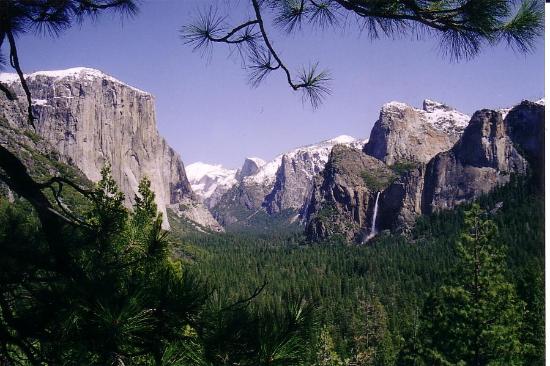 Ken Burns has again captivated my imagination. I adored “Baseball,” was fascinated by “Jazz,” grieved over “The Civil War,” wept watching “The War,” and now find myself “awed” by his new documentary, “The National Parks: America’s Best Idea.” The afterglow lingers this morning: I’m longing for hike through Yosemite Valley…
Ken Burns has again captivated my imagination. I adored “Baseball,” was fascinated by “Jazz,” grieved over “The Civil War,” wept watching “The War,” and now find myself “awed” by his new documentary, “The National Parks: America’s Best Idea.” The afterglow lingers this morning: I’m longing for hike through Yosemite Valley…
Last night’s episode highlighted the remarkable, often synergistic relationship between John Muir the Teddy Roosevelt. Jennifer Schuchmann and I wrote about Muir in our recent book, “Nine Ways God Always Speaks.” I thought I’d include the excerpt here. Once I get this posted, I think I’ll go for a long walk in the woods out behind our house… It will be a good opportunity to dialog with God… Like Muir, I find I can pray better with no man-made roof over my head…
In 1869 John Muir, founder of the Sierra Club, and one of America’s first conservationists, spent the summer traversing the rugged granite passes of California’s Sierra Nevada Mountains. In late August, Muir came to Upper Tuolumne Basin, home to a cluster of majestic, heaven-reaching granite spires named the great Cathedral Peak. A bit of a spiritual free spirit, John recorded the moment in his journal:
It is a majestic temple of one stone, hewn from the living rock, and adorned with spires and pinnacles in regular cathedral style. The dwarf pines on the roof look like mosses. I hope some time to climb to it to say my prayers and hear the stone sermons.
Most of us would just see rocks and trees, but Muir saw a cathedral. He wanted to climb the mountain not for the physical challenge of conquering it and getting a T-shirt to prove he did. He wanted to climb it for spiritual reasons. His desire was to experience God through nature, to say his prayers and listen to God speak through the rocks.
That’s remarkably similar to a verse in the Gospel of Luke. During the triumphal entry, the disciples are praising Jesus, bursting out in song, and dancing about. Then the Pharisees turn to Jesus and say, “Tell them to shut up!”
“I tell you,” he replied, “if they keep quiet, the stones will cry out.”
If the disciples stop praising Jesus, the stones will cry out?
Can stones speak?
Rocks reveal?
Boulders babble?
If so, what do they say? Muir believes they were issuing an invitation to a holy church.
No feature, however, of all the noble landscape as seen from here seems more wonderful than the Cathedral itself, a temple displaying Nature’s best masonry and sermons in stones. How often I have gazed at it from the tops of hills and ridges, and through openings in the forests on my many short excursions, devoutly wondering, admiring, longing! This I may say is the first time I have been at church in California, led here at last, every door graciously opened for the poor lonely worshiper.
He describes this bulge on the earth’s surface as a place that has beckoned him–a place he has pondered, admired, and longed for. Muir recognizes it is a church–nature’s church–a place for a lonely worshiper to enter.
Come in.
Sit down.
Pray and listen.
When he listened, did he hear rocks cry out with a language we can’t speak but only hear? A language we can’t study but only experience?
Perhaps in this natural church God’s sermon is subtle.
Get outside sometime today. Take a breath and thank God for the wonder of his natural world. Then listen as his words come bounding to you through the intricacies of his creativity. Sometimes we’re just too spiritual to be truly spiritually connected. Sometimes we need a down to earth walk down to earth to connect with our transcendent God!

